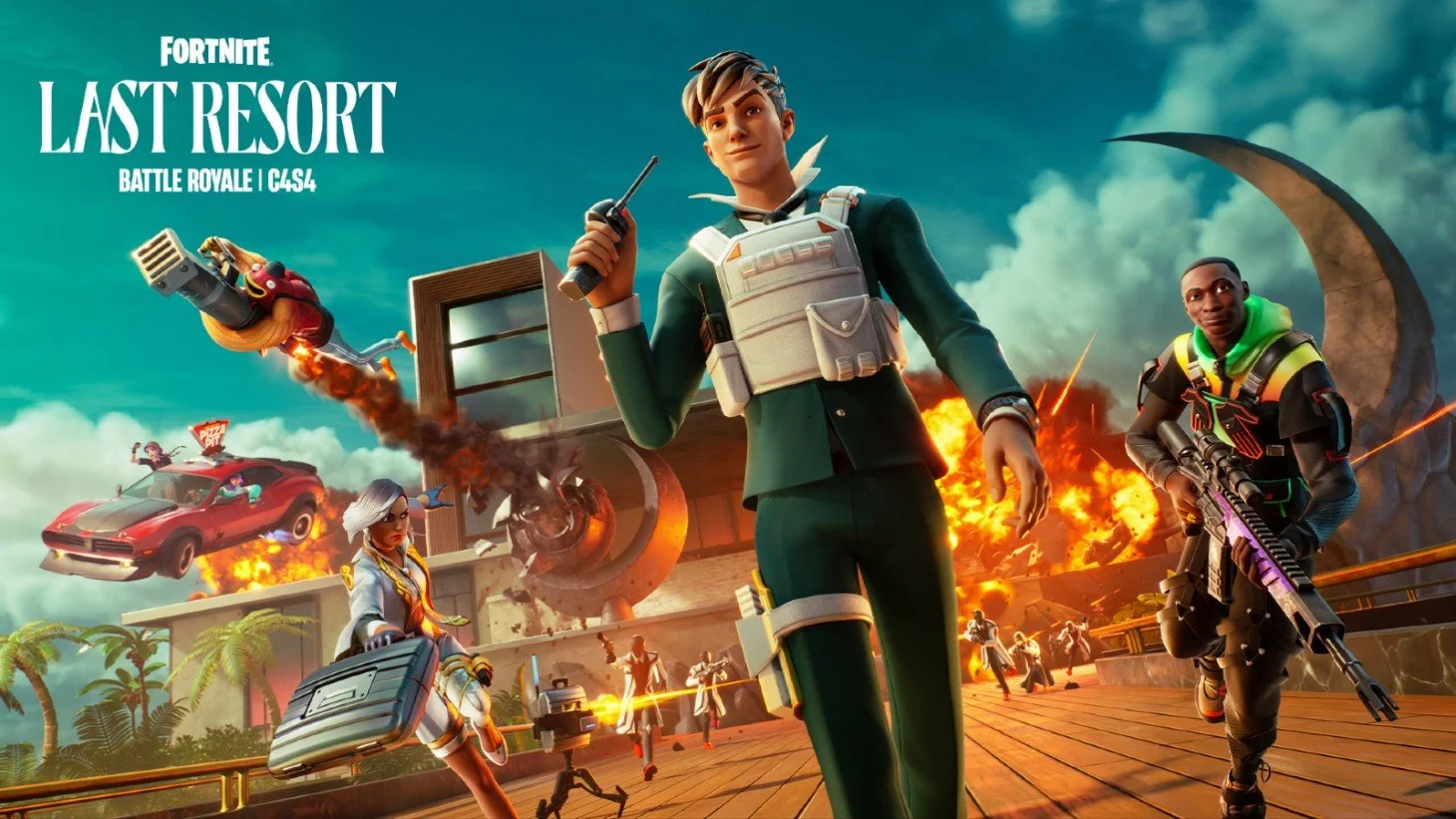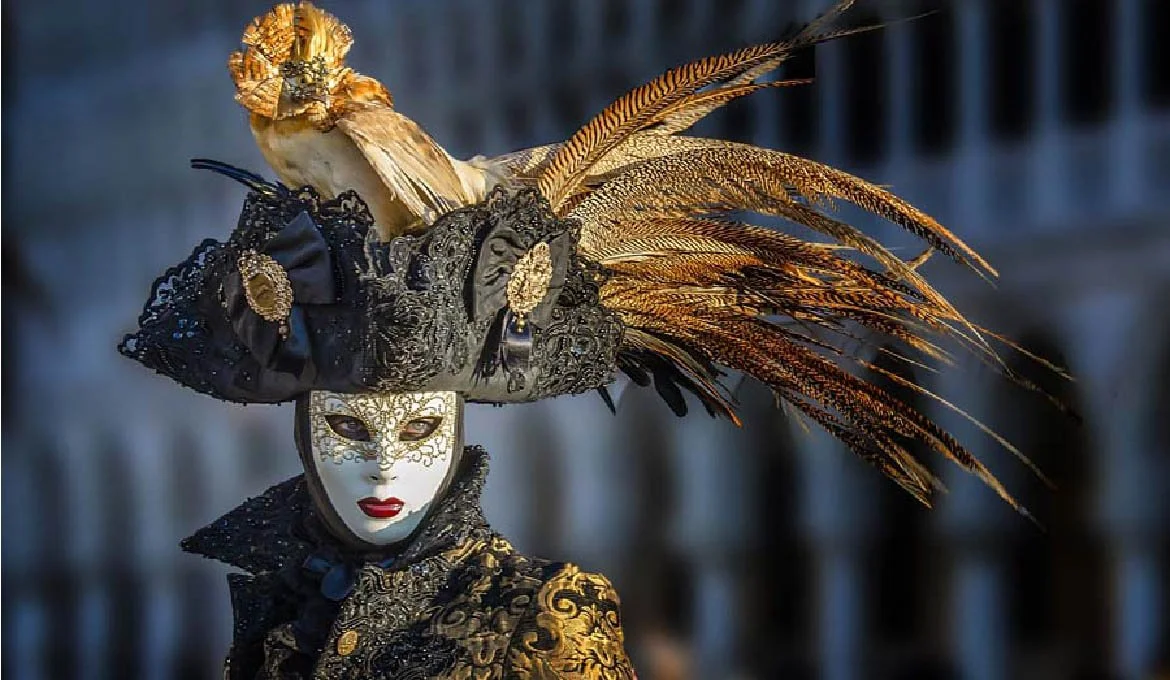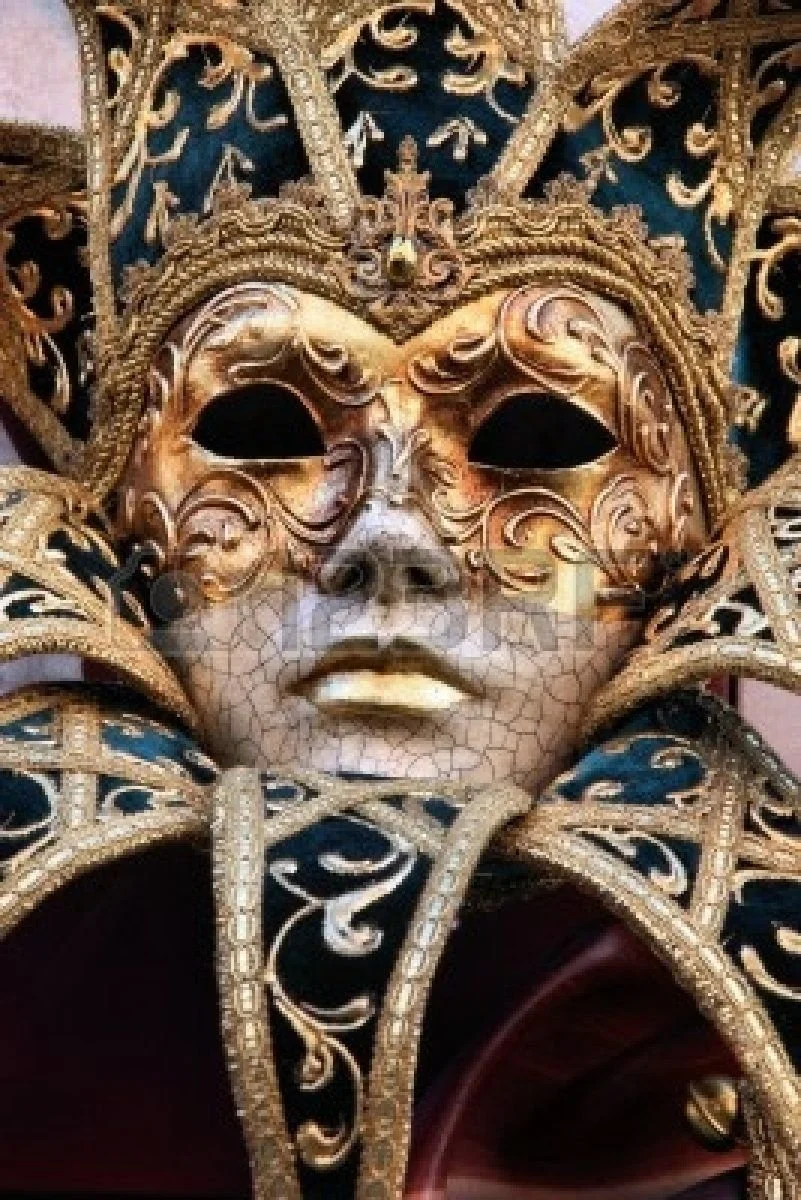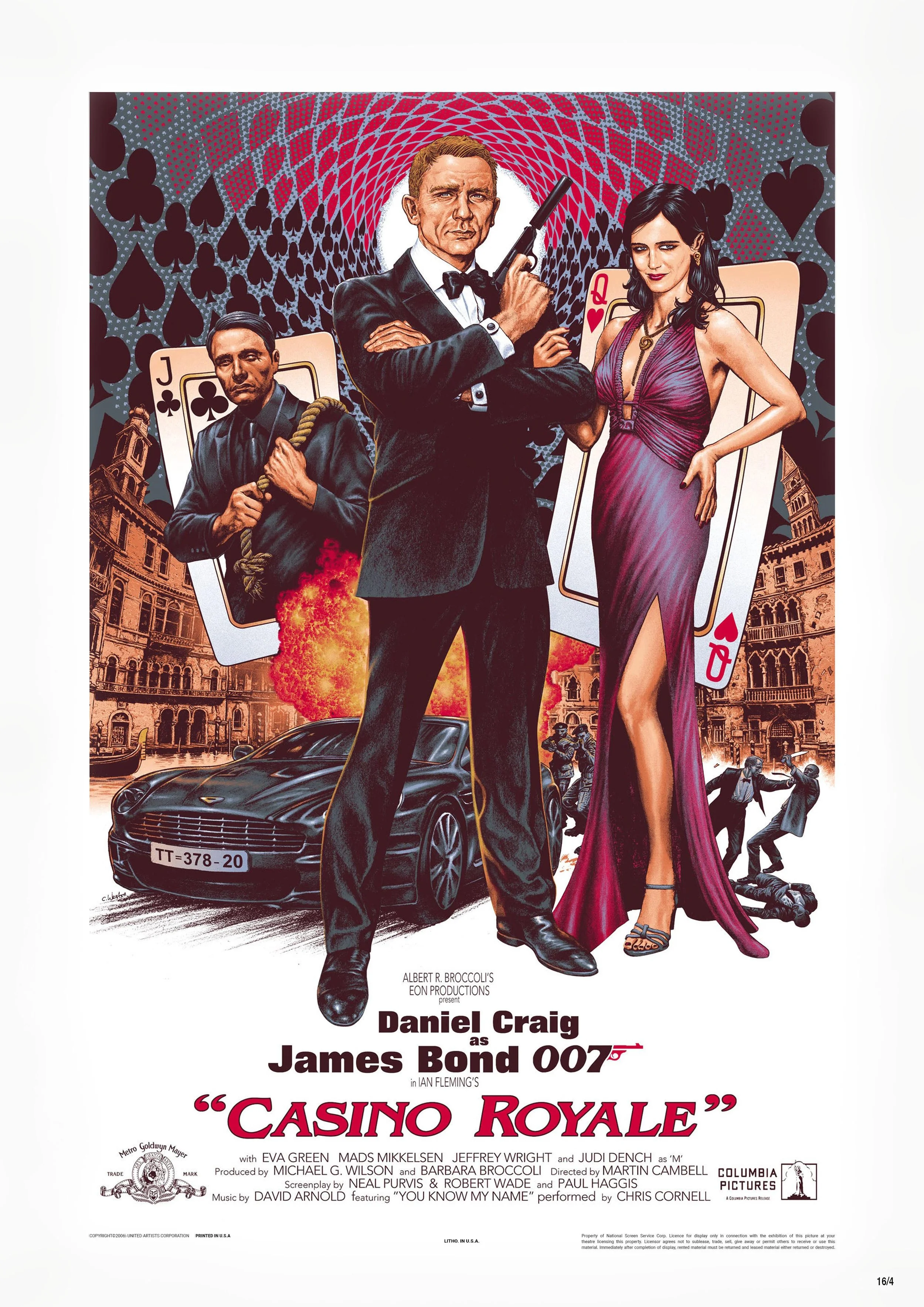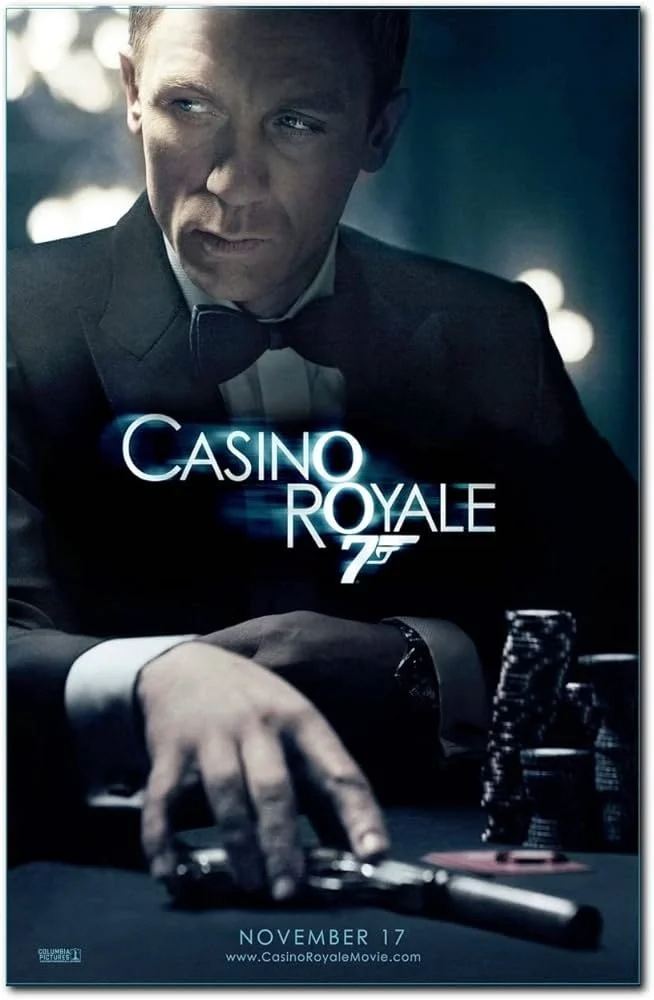Project: Gilded Venetian
Introduction
In fall 2023 I am participating in a travel course that explores ideas of Riskscapes—landscapes and locations that are endangered because of climate change and over tourism. Venice is one of these locations!
While it may seem counterintuitive to visit a place at risk, the goal of this course is to explore the factors that make Venice, and any place a riskscape as well as ethical means and considerations a conscientious traveler can take. For example, we will travel to Venice during the low season, November. We will also stay in Venice, putting our dollars into this fragile landscape, unlike the daytrippers who are known to wreak havoc on this small island city. I want to see what the hype of going to Venice is all about: and figure out why over tourism occurs?
Overall Objective/Summary Statement (This is more a guiding light)
Project Gilded Vancian is a culmination of multiple visual motifs demonstrated through multi media collage to make movie poster designs and symbols to create a narrative, and character design concepts by collecting references in Venice, Italy. I want to include my classmates in my art by engaging with them. Using elements of our conversations for character design. The narrative will be in the form of an Italian Spy Thiller, tackling the theme of Venice being/becoming a potential riskscape and the various ecological effects taking a toll on the city due to over tourism. The Title - The Grand Masquerade: Tale of The Sinking Paradise inspired by James Bond Films like No Time to Die and Casino Royale, Fortnite Chapter 4 Season 4: Last Resort, Italian Spy Thriller, Bullet Train. While incorporating Japanese elements like ikigai and living architecture from the Japan Pavilion into the artworks I create.
Preparation and Research Before Going
Reflecting on Ecologies and Artists in Nature at Gallery 51
Greg Scheckler
My initial impression of Greg Sheckler was indifference. It didn’t speak to me and I didn’t care for it. However, I realized I was just glancing at the art. I was not practicing the slow looking that we had brought up in class and it forced me to go back and look at Sheckler‘s art slowly. I started taking notes of smaller details and the strokes created along the paper and forming a pattern. I did notice this it when I was just glancing. I spent about 30 minutes on one artwork(imaged below from https://timespans.art/timespans). I let myself get lost in the details and copied the movement of the strokes with my own hand. Somewhere at the 15 minute mark it became one of my favorites and I decided to look at it for 5 more minutes and 5 minutes turned into 10 then into 15. I became mesmerized by Greg's art and how it was a striking concept to me because I used to do it all the time my sketchbooks growing up. Greg reminded me that I loved to make those of marks on paper too. I plan to mirror this style more when sketching in Venice.
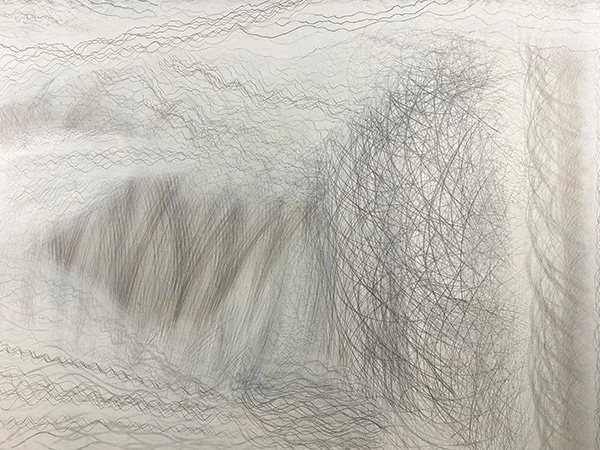

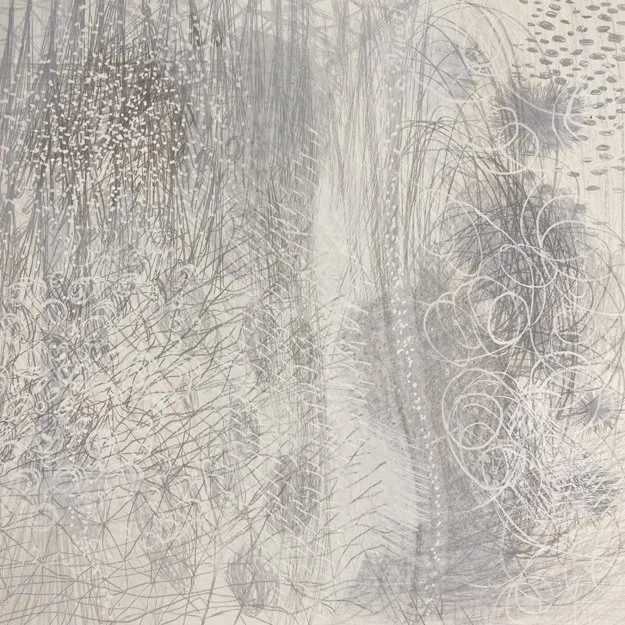

Walking to Water -Melanie Mowinski
“My short definition of wilderness mindset is being present to the unpredictability of life, a concept I developed through my walking practice. When one deliberately seeks the uncomfortable- resiliency, perseverance, confidence, and fortitude get exercised.” - Mowinski
My initial reaction to Melanie Mowinski’s work was shock. Partly because I did not expect to see her work displayed at the gallery, but mostly because she had brought to words a concept that I have been trying to put together since the start of the semester. The wilderness mindset is what triggered my idea of slowly looking at the artwork displayed in gallery 51. At first, admittedly, I was glancing. It’s not for lack of care but it’s because nothing was interesting to my dopamined eye due to the oversaturation of art from social media apps like Instagram and TikTok. I feel as if these social media apps had overflowed my brain with diverse, amazing, highly detailed art. It made made stop appreciating sketches. It made me appreciate Mowinski’s work more because she is currently my professor for my collage class this semester and seeing her work has inspired me to change the way I view myself and others as artists and how we all practice our crafts in line with our identity. As I mentioned previously, it reminded me to go back to Gregory Sheckler’s work and take a second glance, but instead of glancing I should be slowly looking. I will be applying more of Mowinski’s principles to this “Project: Guilded Venician” in order to display my findings before going to Venice, during Venice, and after Venice through the use of collage.
Mark Bradford
Introduction of the Artist/Event/Experience (2-3 minutes)
Mark Bradford Born in Los Angeles 1961 is a contemporary artist best known for his large-scale abstract paintings created out of paper. Bradford’s work explores social and political structures that objectify marginalized communities and the bodies of vulnerable populations.
Having represented the US at the 2017 Venice Biennale, Bradford is a key voice in America’s contemporary cultural canon whose internationally exhibited work addresses underrepresented issues.
During his time there: Bradford has undertaken an initiative with—and is financially supporting—Rio Terà dei Pensieri, A nonprofit that employs those who have been sentenced to jail time in Venice and the surrounding region to promote the reintegration of former inmates.
Which is inline with his theme of social engagement practice through which he reframes objectifying societal structures by bringing contemporary art and ideas into communities with limited access to museums and cultural institutions.
Historical Background (2-3 minutes)
BRADFORD: An artist has a choice to be as political or apolitical as anyone else who’s making choices. So, I don’t think an artist is necessarily apolitical if he or she doesn’t make overtly political work. But so much of contemporary art is engaged in the ideas that are circulating in the atmosphere, in the press and the media, and oftentimes we’re influenced by that. So, it seems comfortable to me to have that bleed into my work. For me, the subtext is always political.
BRADFORD: “My practice is décollage and collage at the same time. Décollage: I take it away; collage: I immediately add it right back. It’s almost like a rhythm. I’m a builder and a demolisher. I put up so I can tear down.”
BRADFORD: My art practice goes back to my childhood, but it’s not an art background. It’s a making background. I’ve always been a creator. My mother was a creator; my grandmother was a creator. They were seamstresses. There were always scraps of everything around. There were always two or three or four projects going on at the same time. We just never had an art word for it. But I would go to the museum as a child, and I was bored. They would tell me about art, and I would look around and say, “This is art.” Then I’d get on the bus and go home. It never touched me. But the projects at home touched me. For instance, making the signs for the prices at my mother’s hair salon: I was in charge of that, so I taught myself calligraphy.
Importance (1-2 minutes)
Bradford: Reading about these kinds of conditions made me realize it was about independence, about doing your own thing. And that’s a state of mind. It’s not an artwork or a book. It’s a state of mind. Fluidity, juxtapositions, cultural borrowing—they’ve all been going on for centuries. The only authenticity there is what I put together.
Bradford: I take comfort in histories and knowing that something came before me and something will come after me and that I’m just part of it. Sometimes students will say, “Well, it’s all been done.” But I think, “Who cares? What does that have to do with anything?” I wouldn’t be painting if I cared about that. Okay, it’s all been done—so what? You have to figure out how to do it for you.
This helped my solidify that art is about identity. This is why it becomes hard for me to separate artists from their art.
https://art21.org/read/mark-bradford-politics-process-and-postmodernism/
https://news.artnet.com/art-world/mark-bradford-womens-prison-venice-833657
Activity" (15-20 minutes)
Go to Rio Terà dei Pensieri,
Try to engage in conversation with the people working there and how Bradford has impacted the store and the programs.
Share what you’ve learned
Questions I plan to ask
How are gender norms different then what we experience in the U.S.?
What underrepresented issues do you notice?
Did Bradford really make a difference?
How can I make a difference like Mark Bradford?
The Japan Pavilion
Introduction of the Artist/Event/Experience (2-3 minutes)
Architecture, a place to be loved — when architecture is seen as a living creature
Commissioner: The Japan Foundation
Curator: Onishi Maki
Exhibitors: Hyakuda Yuki, Tada Tomomi, Harada Yuma, dot architects (Ienari Toshikatsu, Doi Wataru, Ikeda Ai, Miyachi Keiko), Moriyama Akane, Mizuno Futoshi
Architecture, a place to be loved, is possible when architecture encompasses its engraved memories and stories and embodies the backdrop and the activities that took place, giving the architecture a broader meaning. It is also possible to perceive architecture as a living creature, rather than an entity separate from nature.
The members of our team have many different specialties: textiles, ceramics, photography, design, editing, and architecture. Through the Japanese pavilion we create a spatial experience that invites visitors to think about architecture as a place to be loved.
Historical Background (2-3 minutes)
1274, 1281: Kublai Khan's Mongol invasions are repelled with help of kamikaze ("divine winds," or storms). Defense against these invasions weakens structure of the military government at Kamakura.
MUROMACHI (1333 -1568) Muromachi district of Kyoto becomes base for Shogun Ashikaga Takauji's new military government.
Takauji and his successors become patrons of Zen and spontaneity in ink painting, garden design, and the chanoyu (tea ceremony).
1467-1568: The 10 year-long Onin no Ran (Onin War) brings disintegration of central government, followed by the Sengoku Jidai (Era of the Country at War). Firearms introduced by shipwrecked Portuguese soldiers (1543),Christianity by Francis Xavier (1549).
AZUCHIMOMOYA MA (1568 -1600) Oda Nobunaga starts process of reunifying Japan after a century of civil war; he is followed by Toyotomi Hideyoshi (1536-1598). Foundation of modern Japan is laid.
Hideyoshi's ambition to conquer Korea and China is thwarted by local resistance. Arts such as painting, monumental decorative designs, and the tea ceremony continue to flourish.
EDO (TOKUGAWA) (1600 -1868) Japan enters an age of peace and national isolation.
Tokugawa leyasu founds new shogunate at Edo (now Tokyo). In 1635 national isolation policy limits Chinese and Dutch traders to Nagasaki. Christianity is suppressed. Establishment of rigid social hierarchy ensures peace and stability throughout Japan. (Samurai are ranked highest, followed by farmers, artisans, and merchants.) By the early 1700s, cities and commerce flourish. A growing merchant class enjoys Kabuki and Bunraku theater. Printing and publication of books increase; education becomes available to the urban population. Commodore Matthew C. Perry and his steam frigates arrive in Japan (1853); the United States wants to use Japanese ports as supply bases for its commercial fleet. Japan accepts the U.S. demands and opens its door for the first time in two centuries.
Importance (1-2 minutes)
Japanese Zen Buddhist Philosophy
Zen aims at the perfection of personhood. To this end, sitting meditation called “za-zen” is employed as a foundational method of prāxis across the different schools of this Buddha-Way—which is not an ideology, but a way of living. Through za-zen the Zen practitioner attempts to embody non-discriminatory wisdom vis-à-vis the meditational experience known as “satori” (enlightenment). A process of discovering wisdom culminates, among other things, in the experiential apprehension of the equality of all thing-events.
The most distinguishing feature of this school of the Buddha-Way is its contention that wisdom, accompanied by compassion, is expressed in the everyday lifeworld when associating with one’s self, other people, and nature.
The Meaning of the Term Zen
The designation of this school of the Buddha-Way as Zen, which means sitting meditation, is derived from a transliteration of the Chinese word Chán.
Ikigai
Ikigai (ee-key-guy) is a Japanese concept that combines the terms iki, meaning “alive” or “life,” and gai, meaning “benefit” or “worth.”. When combined, these terms mean that which gives your life worth, meaning, or purpose. Ikigai is like the French term “raison d’etre” or “reason for being.
I connected this philosophy with why I chose to be an artist
This philosophy breaks down into 4 different areas:
What you love (Passion and Mission)
What you are good at (Passion and Profession)
What you can be paid for (Profession and Vocation)
What the world needs (Mission and Vocation)
Biennale Architettura 2023 | Japan (labiennale.org)
https://www.japan.go.jp/kizuna/2022/03/ikigai_japanese_secret_to_a_joyful_life.html
https://asiasociety.org/education/japanese-history
https://plato.stanford.edu/entries/japanese-zen/
Haiku Activity (15-20 minutes)
Take 3 slow deep breaths and keep zen and ikigai in mind
Pick 1 object/area
Focus on it
Deconstruct object/area by writing a Haiku poem
A Haiku is a form of Japanese poetry with a 5-7-5 syllable structure, with a focus in writing about serious topics by referencing metaphors from nature.
Share your poem!
Practice this while you have chances to sit still and use it as a form of slow looking.
The Role of the Clark
The Clark collects ephemera thanks to the generosity of a specific donor, but only selections from the Biennale. Even so, viewing is worthwhile. We will look at a selection of ephemera today from around the world that demonstrate the ways artists use this medium to extend their ideas. Specifically, we are going to look at works that relate to ecology, the environment, and riskscapes.
Implementation of “Wilderness Mindset”
I plan to use Melelanie Mowinski’s Wilderness Mindset while in Venice. It’s an adventure! I plan to analyze aspects of social society there, architecture, there will be no cars so how does that change how the society works? How will nature itself respond to this?
Creative Response
Artist Statement (Draft)
Project Guilded Vencican
References Details - Using collage to make a movie-style poster, and character design concepts by collecting references in Venice, Italy. Including my classmates in my art for representation of multiple cultures/communities and character design.
Title - The Grand Masquerade: Tale of The Sinking Paradise
Vibe and Vision - James Bond, No Time to Die, Fortnite Chapter 4 Season 4 Last Resort, Italian Spy Thriller
Visual References


















